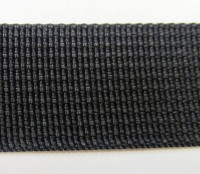- Local: (516) 346-4636
- Toll-Free: (800) 886-6060
- Fax: (516) 346-4366
- Email: kflynn@nationalwebbing.com
Webbing is an excellent material as it is sturdy and durable. Webbing is used in many different facets, including but not limited to, arts and crafts, climbing, parachuting, and more. The three most popular types of fabrics used are nylon, polypropylene, and nylon webbing. Each one comes with its advantages and disadvantages. Which one is right for you?
Advantages
Nylon webbing is a brightly colored and extremely durable material. It’s often the choice when manufacturers are looking for an incredibly durable material. Safety belts, dog leashes, and luggage straps are typically made with nylon webbing.
Disadvantages
Although nylon usually has a vibrant color, that color quickly becomes dull with sun exposure. Nylon is not UV resistant. Additionally, this sturdy material weakens when wet. It is heavier and more expensive than its counterparts.
Polyester Webbing:
Advantages
Polyester is also incredibly durable and has a low breaking point, which means it can carry heavy loads. It also features colors that do not bleed.
Disadvantages
While the color does not bleed, it is much lighter than other materials. Polyester is not a great choice when looking for bright colors.
Advantages
Polypropylene is an excellent choice as it does not lose its color, and it’s easy to clean. This material works great if you’re creating a product that will be in contact with water as it floats.
Disadvantages
While polypropylene is strong, it’s not as durable as its counterparts.
Related Reading: